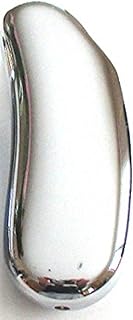The Future of the BIC Lighter: A Flicker of Innovation
The BIC lighter, a ubiquitous symbol of convenience and affordability, is facing a future that's both promising and uncertain. While its core functionality remains relevant, the landscape is shifting, driven by evolving consumer preferences, environmental concerns, and emerging technologies.
Here's a glimpse into potential paths for the BIC lighter:
1. Sustainability Reigns:
* Refillable and Recyclable Designs: BIC is already exploring refillable lighters, offering a more sustainable alternative. Future iterations could see fully recyclable materials and innovative refill mechanisms for extended lifespan.
* Bio-based Fuels: Shifting to bio-based fuels, derived from renewable sources, would significantly reduce the environmental impact.
* Partnerships with Sustainability Initiatives: Collaboration with organizations promoting waste reduction and responsible sourcing could bolster the brand's eco-friendly image.
2. Technology Takes the Lead:
* Smart Lighters: Incorporating sensors and connectivity features could enable remote control, flame adjustment, and even integration with smart home systems.
* Inductive Charging: Wireless charging could eliminate the need for disposable batteries, making them even more convenient.
* Integrated Tools: Combining the lighter with other tools like a bottle opener or a keychain flashlight could broaden its appeal.
3. Adapting to New Markets:
* Focus on Niche Applications: Catering to specific needs like camping, grilling, or artisanal crafts could offer a differentiated market position.
* Collaboration with Brands: Partnerships with complementary brands like outdoor apparel companies or culinary brands could create unique product lines.
* Expanding into Emerging Markets: Targeting new geographical markets where lighter use is prevalent could drive growth.
Challenges and Opportunities:
* Competition from Alternatives: E-cigarettes, electric lighters, and even portable induction stoves present alternative solutions for various applications.
* Regulatory Landscape: Stricter regulations regarding flammables and environmental concerns could impact production and design.
* Changing Consumer Habits: The rise of electronic devices and the decline of traditional smoking may impact the demand for lighters.
Conclusion:
The BIC lighter's future rests on its ability to adapt and innovate. Embracing sustainability, leveraging technology, and exploring new markets will be crucial for staying relevant. By addressing the challenges and capitalizing on the opportunities, the BIC lighter can continue to flick its flame for many years to come.


